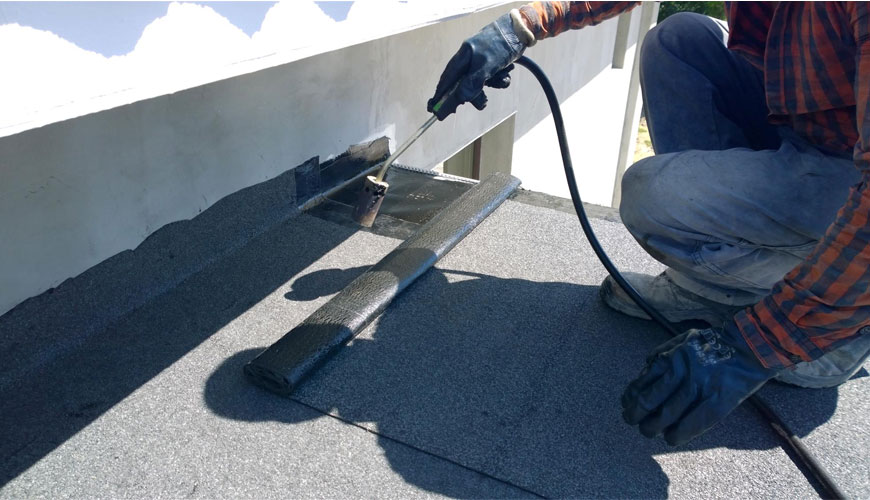

EUROLAB laboratory provides testing and compliance services within the scope of EN 13956 standard. The EN 13956 standard specifies the definitions and properties of plastic and rubber sheets, including sheets made of mixtures and alloys (thermoplastic rubber), the intended use of which is roof waterproofing. It specifies the requirements and test methods and enables the evaluation of products' conformity with the requirements of this European Standard.

Where a tolerance is limited by this European Standard, it need not be declared by the manufacturer. When tested for purposes other than initial type testing or factory production control, tests to determine product characteristics specified in this European Standard must be initiated within 1 month of delivery from the manufacturer.
Length, width, flatness and flatness will be determined according to EN 1848-2 and meet the requirements. Flatness and flatness values are valid only for sheets supplied in rolls. Flatness and flatness values do not apply to folded pages. Waterproofing will be determined according to EN 10 using method B at an applied water pressure of 0,1 kPa (1928 bar) and will yield successful results.
Information on the effect of liquid chemicals on plastic and rubber is given. When further information on resistance to liquid chemicals is required, tests according to EN 28 should be performed at 23 °C for 1847 days.
When necessary, the peel resistance of the joints will be determined in accordance with EN 12316-2. The peel resistance must be greater than or equal to the manufacturer's limiting value (MLV). Where necessary, the breaking resistance of the connections shall be determined in accordance with EN 12317-2. The cut resistance must be greater than or equal to the manufacturer's limiting value (MLV). If the result is not achieved due to too much elongation, the grip distance may be reduced.
An initial type test should be carried out to demonstrate compliance with this European Standard. Previously performed tests (same product, same property(s), test method, sampling procedure, conformity verification system, etc.) according to the provisions of this European Standard may be considered. In addition, the first type test should be carried out at the beginning of production of a new product type (unless it is a member of the same family) or at the beginning of a new production method (where it may affect the specified properties).
Type tests should be repeated whenever a change occurs in the product design, the raw material or supplier of components, or the manufacturing process (subject to a family definition) that would significantly alter one or more properties. appropriate feature(s).
EUROLAB, with its more than 25 years of experience, state-of-the-art accredited laboratories and expert team, helps you get precise and fast results. Do not hesitate to contact our laboratory for your testing and certification requests.
To get an appointment, to get more detailed information or to request an evaluation, you can ask us to fill in our form and reach you.